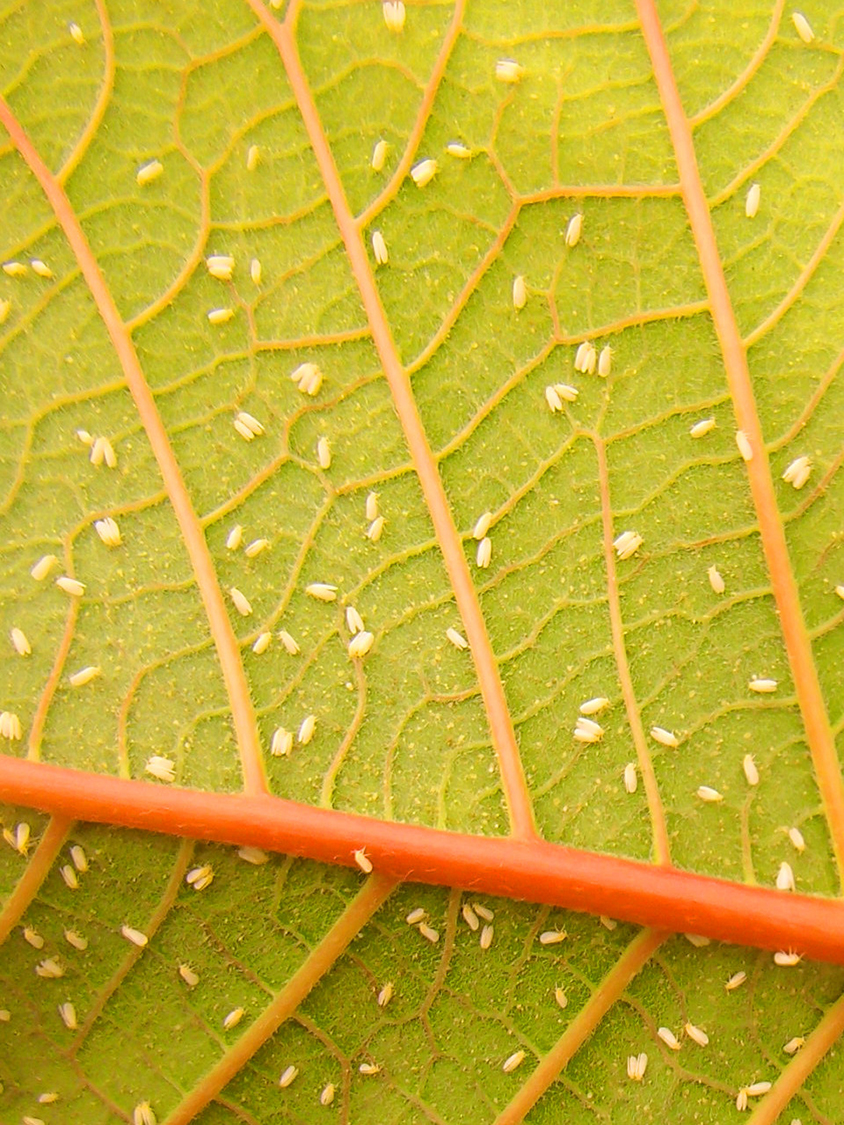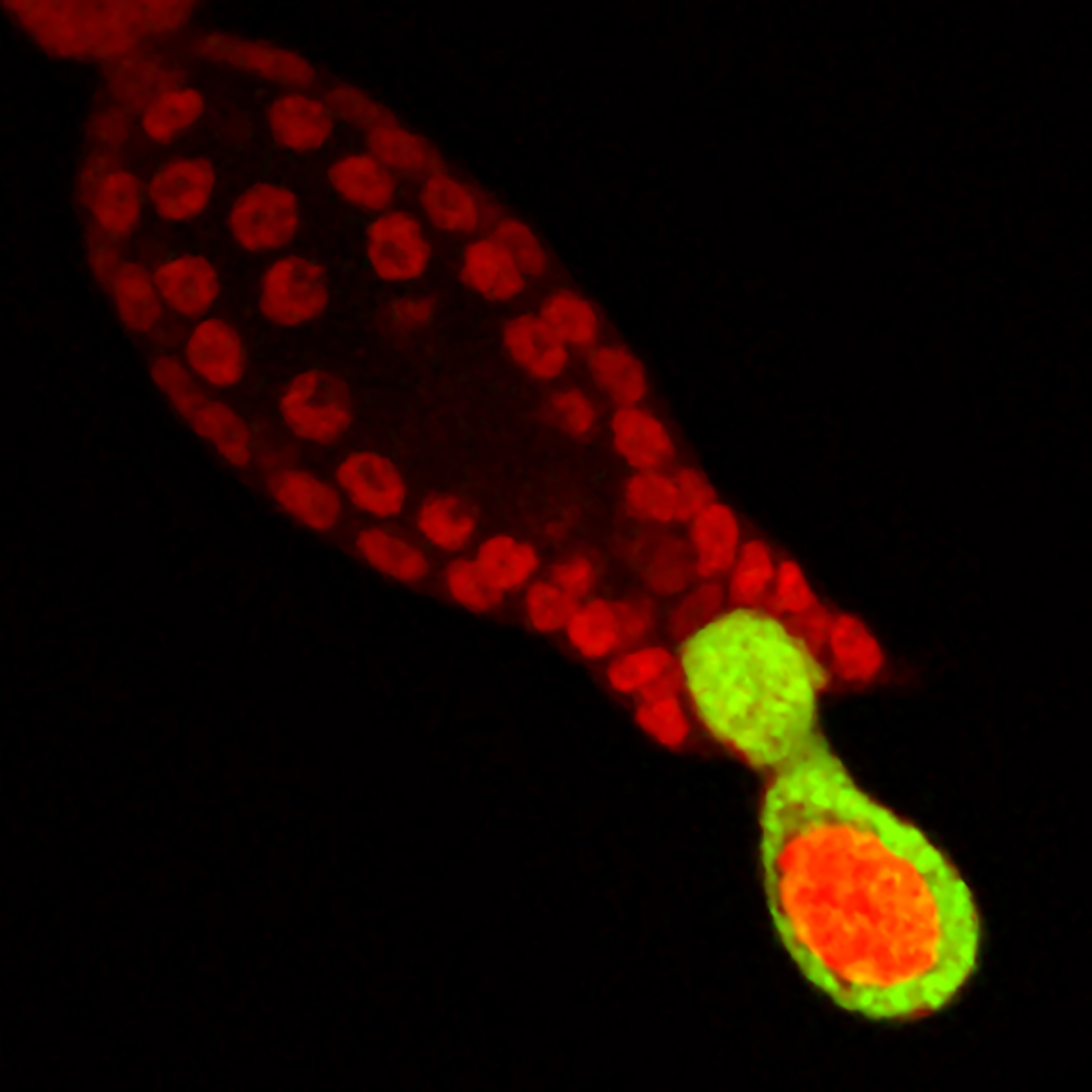Ancient symbiosis points to possible whitefly controls
By Krishna Ramanujan
Uncovering the details of a 100 million-year-old symbiosis between bacteria and whiteflies opens the door for controlling an insect pest that is rated one of the top 10 invasive species on the planet.

Bemisia tabaci, a whitefly no bigger than a dust particle, sucks plant sap and infects crops with viruses. They have spread to every continent with the exception of Antarctica and have decimated such crops as cabbages, beans, eggplants, tomatoes and cassava, a main staple in sub-Saharan Africa.
An interdisciplinary team – including researchers from Cornell and China’s Zhejiang University – has found that the whitefly pest B. tabaci is dependent on special bacteria that are transmitted from mother to offspring through eggs.
Scientists have known that the bacteria live within a whitefly host cell. In a study published June 29 in the journal Proceedings of the Royal Society of London B, the team found that these special host cells divide and crawl to the ovaries of adult females, where the cells squeeze between the egg and the egg sheath, and thereby pass the bacteria from mother to offspring.
The researchers report they have identified unique whitefly genes that are very strongly expressed in the crawling host cells of B. tabaci and that control cell mobility and division.

“It is the first study to identify molecular targets that we can exploit to control these insects in a highly specific way,” said Angela Douglas, Cornell professor of entomology and of molecular biology and genetics, and a senior author of the study. Jun-Bo Luan, a postdoctoral researcher in Douglas’ lab, and Hong-Wei Shan, an entomologist at Zhejiang University in China, are co-first authors.
“What we want to do next is target the molecular products of these genes and block their transmission, because they give us very specific targets without bad effects on beneficial insects and other organisms,” Douglas said.
Previous work, by Shan and Shu-Sheng Liu, also an entomologist at Zhejiang University and a co-author of the current study, has shown that when the whiteflies are treated with antibiotics, which kills the bacteria, the whiteflies fail to grow and reproduce. The bacteria provide the whiteflies with essential amino acids that are specifically lacking in the sap the flies feed on.
Co-authors include Jan Lammerding, associate professor in the Meinig School of Biomedical Engineering and the Weill Institute for Cell and Molecular Biology; Phillip Isermann, a visiting scientist in Lammerding’s lab; and Jia-Hsin Huang, a former postdoctoral associate in Douglas’ lab.
The study is funded by the Bill & Melinda Gates Foundation and the National Natural Science Foundation of China.
Media Contact
Get Cornell news delivered right to your inbox.
Subscribe